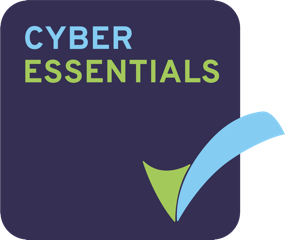Here are some essential parts of the anatomy of a high converting landing page you should use as your fundamentals before branching out into your own landing page ideas.
Unique selling proposition (USP)
Your USP (or USPs) is what sets you apart from the rest of the competition, so it is essential to include them in your landing page. Think of it as how you position your offering as different and better than your competitors. Your landing page needs to communicate your proposition in the most effective way so visitors immediately understand what makes your product/service appealing. A series of page elements tell the story of why your offering is unique.
- The main headline: this is the first thing the customer will read, so it’s critical it very clearly describes what a visitor will get from your product or service. Keep it punchy and be direct about your USP.
- A supporting headline: this can either act as a direct extension of the headline or offer additional value/convey a secondary persuasive message that’s still related to your headline.
- A reinforcing statement: if you have a long running landing page, it is important to remind visitors of your USP with a reinforcing statement towards the middle of the page. How can you drive your USP home now the visitor has been sufficiently primed from viewing some of your site?
- A closing statement: this backs up your USP and gives your visitor one last chance to convert. It could provide a little urgency or remind the visitor why they’re on your site in the first place. For a clickthrough page, it should also repeat your call-to-action to eliminate the need to scroll back up.
The hero image
As the hero image is likely the first visual element of your landing page that visitors will see, it is essential to get this first impression spot on. Ideally, a hero image would show the context of use. But don’t use uninspiring stock images, try and use an image that will convey emotion within the viewer.
Benefits
Your landing page needs supporting copy beyond the headline to persuade most viewers, and the key here is to describe specific benefits along with features.
A feature is a specific quality of your product or service, whereas a benefit describes the positive impact that this feature has. If you show off features and benefits together, ideally leading with the benefit, you are sure to drive more conversions.
An example includes ‘Keep cool with an ice-cold Sunshine lemonade’
Social proof
Social proof is the influence that people around us have on the decisions we make, which is a powerful tool to include in your landing page. After all, we can all remember a time a decision we made was influenced by a friend. This could include case studies, video interviews or testimonials, review scores or direct quotes from customers.
However, the top tip here is not to fake it – if people suspect these reviews are fake they will immediately not trust your brand. Secondly, be specific. A testimonial will hold the most weight when an individual can actually identify with the person giving it, so ensure you include the who, what, when, why and how of your customer’s experience.
Focus on a conversion goal
Your landing page should be focused on one conversion goal, so it is essential this is presented as a Call to Action to the visitor. This could include a standalone button on a clickthrough page or a form on a landing page designed for lead generation, whatever it is, make sure it’s included!
There are many advanced resources you can use to create an optimal CTA, but to start with, focus on 3 key basics:
- Avoid bland button text: rather than using text like ‘click here’, use conversational language to let your visitors know exactly what they’ll be getting for their previous clicks. For example, ‘get 50% off your purchase’. It’s also important to include verbs and strong action words such as ‘download’ or ‘get’ and to make them time-sensitive, such as ‘now’, in order to encourage engagement.
- Keep forms as short as possible: this will ensure the visitor doesn’t get too bored before they click submit at the end of the form, increasing your conversions. Also make sure you include a privacy statement and provide reassurance that their data is safe, complying with GDPR regulations. However don’t sell yourself short – the amount of information that you ask for should be reflective of the value a customer is getting. For example, if they’re downloading a guide or ebook, you could ask for slightly more than just their name or email, as you are providing them with more value.
- Trial them out: small differences can have a big impact on your conversion rates, so set up some testing to find the most effective CTA you can use on your landing page to get those conversions in.
As you know by now, your landing page is an essential part of your site structure, is yours still not perfect? Don’t worry – we’re on hand to help. Get in touch and let’s have a natter.
About Inflowing
Inflowing is a B2B marketing agency. We help B2B organisations do meaningful things with marketing. Whether that’s getting more leads, more visibility, or supporting their sales teams.
We’re an experienced team of marketers with an incredibly strong background in B2B. To learn more about B2B and improving your marketing, check out our other blogs or get in touch.
